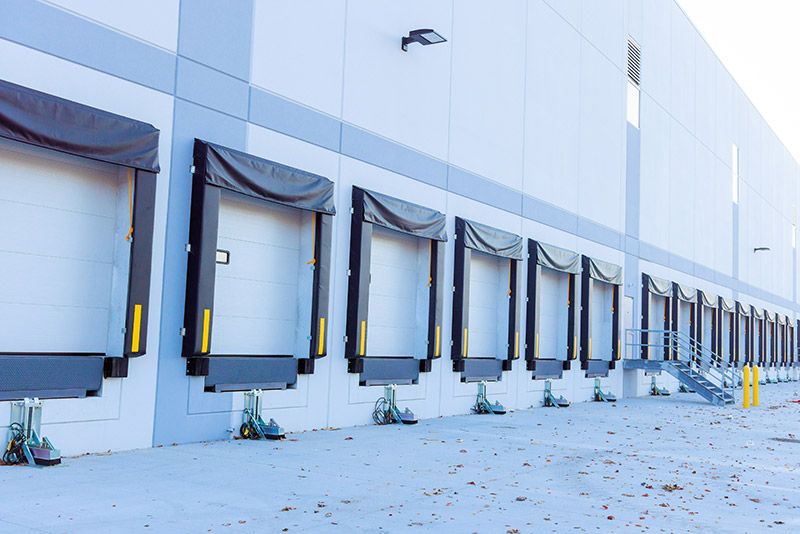Warehouse management is constantly evolving, driven by new technologies, shifting market demands, and the need for greater efficiency. As we move into 2025, several emerging trends are set to redefine how warehouses operate. Staying ahead of these trends can help businesses improve productivity, reduce costs, and meet customer expectations more effectively. Let’s take a look at the top warehouse management trends to watch in 2025.
1. Increased Adoption of Warehouse Automation
Automation continues to be a game-changer in warehouse operations. In 2025, more warehouses will adopt advanced automation technologies to streamline processes and reduce reliance on manual labor.
- Automated Guided Vehicles (AGVs) and Autonomous Mobile Robots (AMRs): These robots can transport goods across the warehouse, improving efficiency and reducing human error.
- Robotic Picking Systems: Advanced robotic arms equipped with AI can pick and sort items faster than human workers, reducing order processing times.
- Conveyor and Sorting Systems: Automated conveyor belts and sorting machines will become more prevalent, helping warehouses handle higher order volumes with ease.
2. Expansion of AI and Machine Learning Applications
Artificial intelligence (AI) and machine learning (ML) are transforming warehouse management systems (WMS) by enabling smarter decision-making.
- Demand Forecasting: AI-driven analytics can predict demand patterns, helping warehouses optimize inventory levels and avoid stockouts or overstocking.
- Real-Time Optimization: Machine learning algorithms can continuously analyze warehouse operations and suggest improvements in real time.
- Predictive Maintenance: AI can monitor equipment health and predict when maintenance is needed, reducing downtime and repair costs.
3. Emphasis on Sustainability and Green Warehousing
Sustainability is becoming a core focus for warehouse operations as businesses strive to reduce their environmental impact.
- Energy-Efficient Lighting and HVAC Systems: Warehouses are adopting LED lighting and smart HVAC systems to lower energy consumption.
- Renewable Energy Integration: More facilities are investing in solar panels and other renewable energy sources to power their operations.
- Waste Reduction Initiatives: Warehouses are implementing recycling programs and using eco-friendly packaging materials to minimize waste.
4. Rise of Micro-Fulfillment Centers
The demand for faster delivery is driving the growth of micro-fulfillment centers, which are small warehouses located closer to urban areas.
- Faster Last-Mile Delivery: By positioning inventory closer to customers, businesses can offer same-day or next-day delivery.
- Automated Micro-Warehouses: Many micro-fulfillment centers are fully automated, allowing for high efficiency in small spaces.
- Reduced Transportation Costs: Proximity to customers reduces shipping distances and associated costs.
5. Advanced Inventory Management Systems
Inventory management is becoming more sophisticated with the help of new technologies.
- IoT-Enabled Tracking: Internet of Things (IoT) devices can provide real-time updates on the location and condition of inventory.
- RFID Technology: RFID tags are becoming more common, allowing for faster and more accurate inventory counts.
- Blockchain for Traceability: Blockchain technology can enhance supply chain transparency by providing a tamper-proof record of a product’s journey.
6. Enhanced Employee Productivity Tools
Despite the rise of automation, human workers remain essential to warehouse operations. New tools are emerging to boost their productivity and safety.
- Wearable Technology: Devices such as smart glasses and wearable scanners can help employees work faster and more accurately.
- Augmented Reality (AR) Solutions: AR tools can guide workers through complex tasks, such as picking or assembly, by overlaying digital instructions onto the real world.
- Training and Upskilling Programs: As technology evolves, continuous training programs will be critical to ensuring that employees can work effectively alongside advanced systems.
7. Cloud-Based Warehouse Management Systems
Cloud-based WMS platforms are becoming the norm, offering greater flexibility and scalability compared to on-premise solutions.
- Remote Access: Cloud-based systems allow managers to monitor and control warehouse operations from anywhere.
- Seamless Integration: These systems can easily integrate with other business applications, such as ERP and CRM platforms.
- Scalable Solutions: As businesses grow, cloud-based systems can be scaled up to accommodate increased volumes without significant infrastructure investments.
8. Focus on Data-Driven Decision Making
Data is playing a more significant role in warehouse management, enabling businesses to make informed decisions.
- Advanced Analytics Tools: Warehouses are leveraging advanced analytics to identify trends and uncover inefficiencies.
- KPI Monitoring: Real-time dashboards provide visibility into key performance indicators (KPIs), helping managers track progress toward operational goals.
- Custom Reporting: Many WMS platforms now offer customizable reporting features, allowing businesses to generate reports tailored to their specific needs.
The warehouse of 2025 will be smarter, more efficient, and more sustainable, driven by innovations in automation, AI, and data analytics. By staying ahead of these trends, businesses can remain competitive in a rapidly evolving landscape. Whether it’s through adopting cutting-edge technology or focusing on employee development, proactive warehouse managers will be well-positioned for success.
Are you ready for the warehouse of the future? Share your thoughts on these trends in the comments below

